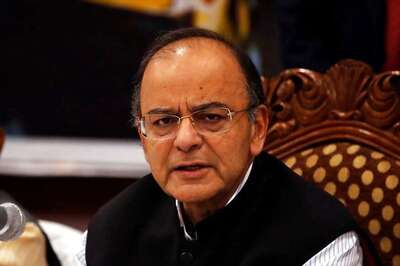
views
The discourse around climate change across the globe and the science behind it have clearly indicated that changing climate is one of the major global challenges of the 21st century. Over the last few decades, world has experienced increasing frequency and intensity of hazards and disasters such as droughts, intense rainfall events, heat waves, storm surges having adverse effects on human activities.
The frequency and the intensity of such disasters are expected to accelerate further in the future as a result of climate change.
India’s average temperature has risen by around 0.7°C during 1901–2018 and is projected to rise by approximately 4.4°C relative to the recent past towards the end of the century, a recently published MoES report on Climate change assessment suggested. The frequency and intensity of extremes including warm days and warm nights are also projected to increase further in the next decades.
The ongoing pandemic crises have also shown that we live in multi-hazard world and we need to manage and invest in planning for multitudes of concurrent risks in current times for policy action in the near future. Understanding the multitude of risks and then using them for designing robust, holistic and integrated early warning tools is the key for any adaptation and mitigation action. It is also imperative for the success of Sendai Framework and COP pledges.
The 2014 Davos IDRC conference emphasized the need for a shift to the “science of how” from a “science of what,” so that necessary skills and knowledge bases are properly utilized and meet the “last mile” challenge of risk reduction. The priority is to also emphasize on “Science of where” so that location based scientific services can be effectively planned and deployed. Policy relevant science-based early warning tools are indeed making a difference in the world and more so for India.
The recently launched tools by The Energy and Resources Institute viz. Climate Atlas tool and the near real-time urban flood early warning guidance system for Guwahati and Jorhat adds on to the various other locally relevant tools currently existing in the country. To add there are others like Mumbai Weather Live App, DAMINI Lightning App, Kerala Rain App, “Uzhavan” App for farmers in Tamil Nadu and “Odisha Climate” App.
Granular scale climate risk information often leads to identification of areas with varying exposure to different climate-related hazards and helps in preparedness and reduction in loss and damages. Such tools are currently proving very helpful in providing timely information to the general public at large and implementation of local climate action plans.
However, it is also important to ensure that such science-based solutions are scalable, shareable and integrated to sub-regional action plans so that seamless transfer of experience and greater access to data is achieved. Developing a shared vision by public-private-people partnerships and provisioning of granular scientific data is imperative towards designing and deployment of any climate service product at local scales.
It is equally important to have an effective and implementable scientific solution that understands the granularity of public-policy problems in climate-sensitive sectors like agriculture, water and renewable energy. This necessitates the partnership between science and policy at multiple levels and at varied time scales.
To initiate effective science-policy collaboration in a sub-national space in India, we need to strengthen the current datasets for proper alignment for any anticipated design changes to policy and planning in future. The science also needs to account for spatial and temporal granularity in policymaking.
The availability of improved observational datasets that are shareable, building institutional capacities at subnational and regional level for risk assessment and mitigation and earmarking dedicated finances for developing preparedness solutions and not just for response mechanisms would ensure a healthy ecosystem for risk-informed scientific tools. This would also facilitate in achieving the Sustainable Development Goals and realization of NDC ambitions under the Paris Agreement.
Disclaimer: Saurabh Bhardwaj is Fellow and Area Convener and Md. Irfan, Project Associate, Center for Climate Modelling at TERI. Views expressed are personal.
Read all the Latest News, Breaking News and Coronavirus News here



















Comments
0 comment